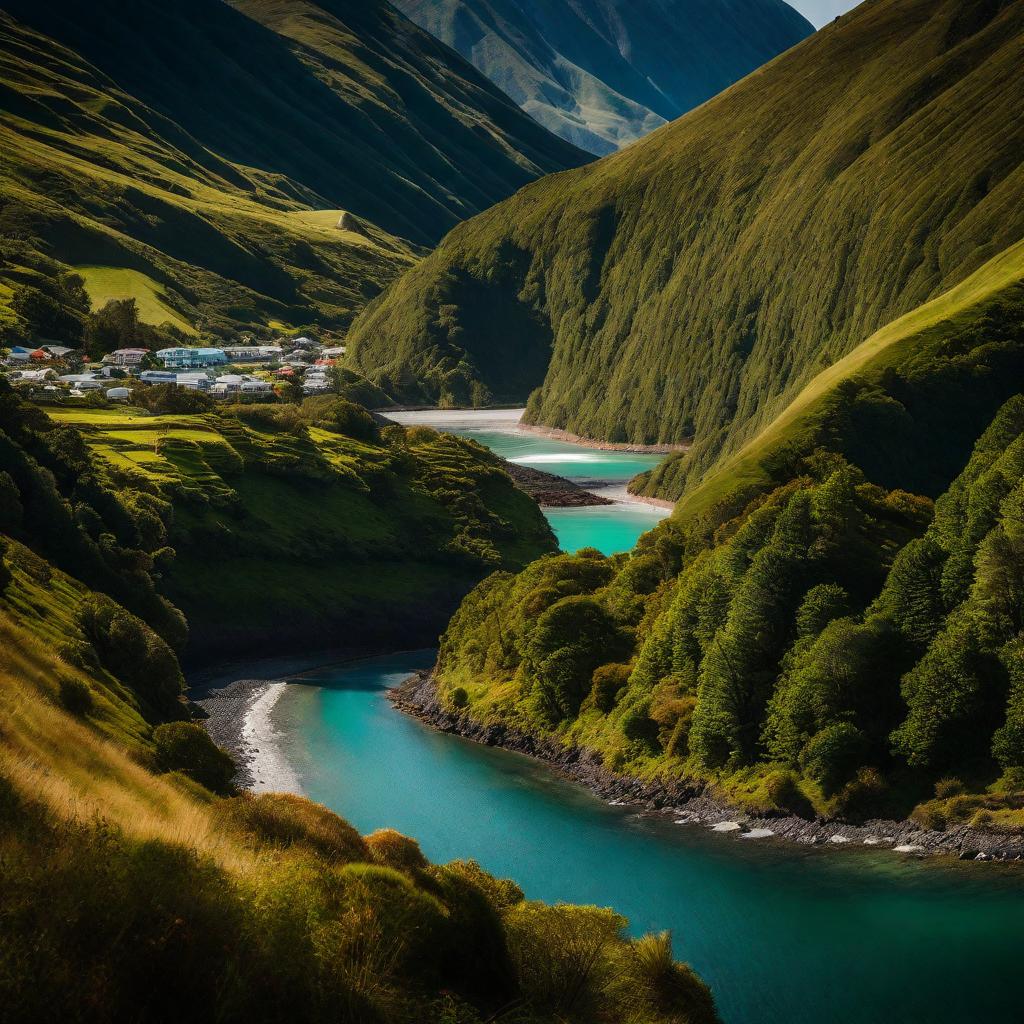Introduce : Top 10 Must-Visit Destinations in Italy
Italy is a country that embodies a perfect blend of diverse landscapes and a rich cultural heritage. With its charming towns, historic cities, picturesque coastlines, and delectable cuisine, Italy is a traveler’s paradise. Moreover, tourism plays a crucial role in Italy’s economy, attracting millions of visitors each year. Let’s delve into the must-visit destinations that make Italy a top travel destination.
Overview of Italy’s diverse landscapes and rich cultural heritage
Italy boasts a diverse topography, ranging from the splendid Alps in the north to the sun-kissed coastlines of the Amalfi Coast and Sicily in the south. Its rich history and artistic legacy, from the Roman Empire to the Renaissance period, have left an indelible mark on the country’s cultural landscape.
Importance of tourism to Italy’s economy
Tourism is a vital sector of Italy’s economy, contributing significantly to its GDP. The country’s renowned art, architecture, fashion, and gastronomy continue to attract tourists from around the globe, supporting millions of jobs and businesses.
Brief history of Italy’s popular tourist destinations
Italy is home to numerous iconic destinations that have played a significant role in shaping its history and culture. From Rome’s ancient ruins to Venice’s mystical canals, each city has a unique story to tell.
1. Rome :
A. Explore the ancient ruins of the Roman Forum:
The Roman Forum stands as a testament to the glory of ancient Rome, offering visitors a glimpse into the heart of the Roman Empire. This sprawling archaeological site served as the political, religious, and commercial center of Rome for centuries. As you wander through the ruins, you’ll encounter iconic structures such as the Temple of Saturn, the Arch of Septimius Severus, and the House of the Vestals. Each of these landmarks holds its own story, reflecting the power and grandeur of Rome at its peak. The Roman Forum provides a fascinating insight into daily life in ancient Rome, with remnants of temples, basilicas, and government buildings scattered amidst the ruins. Exploring this historic site allows you to immerse yourself in the rich history and culture of one of the world’s greatest civilizations.
B. Visit the iconic Colosseum for a glimpse into Italy’s past:
The Colosseum stands as a symbol of ancient Rome’s architectural prowess and cultural significance. This majestic amphitheater, commissioned by Emperor Vespasian in AD 72, once hosted gladiatorial contests, animal hunts, and theatrical performances that entertained thousands of spectators. As you step inside the Colosseum, you’ll be transported back in time to the days of emperors and gladiators. Marvel at the impressive engineering and design of the amphitheater, which could accommodate up to 50,000 spectators. Walk through the corridors and seating areas, imagining the roar of the crowds and the adrenaline of the battles that took place within its walls. The Colosseum offers a fascinating insight into the violent yet captivating spectacles that defined Roman entertainment and culture.
C. Take a stroll through the picturesque streets of Trastevere:
Trastevere, with its winding streets and medieval charm, offers a delightful escape from the hustle and bustle of central Rome. As you wander through this historic neighborhood, you’ll be enchanted by its cobblestone alleys, colorful buildings, and vibrant atmosphere. Trastevere is known for its eclectic mix of artisan shops, traditional trattorias, and lively piazzas, making it the perfect place to soak up the authentic Roman culture. Stop by the Basilica of Santa Maria in Trastevere, one of Rome’s oldest churches, adorned with stunning mosaics and frescoes. Indulge in a leisurely lunch at a local trattoria, savoring classic Roman dishes such as spaghetti alla carbonara or supplì (fried rice balls). As you explore Trastevere, take time to admire its hidden gems, from charming piazzas to quaint boutiques. Whether you’re strolling along the riverfront or getting lost in its maze-like streets, Trastevere offers a truly enchanting experience in the heart of Rome.
2. Florence :
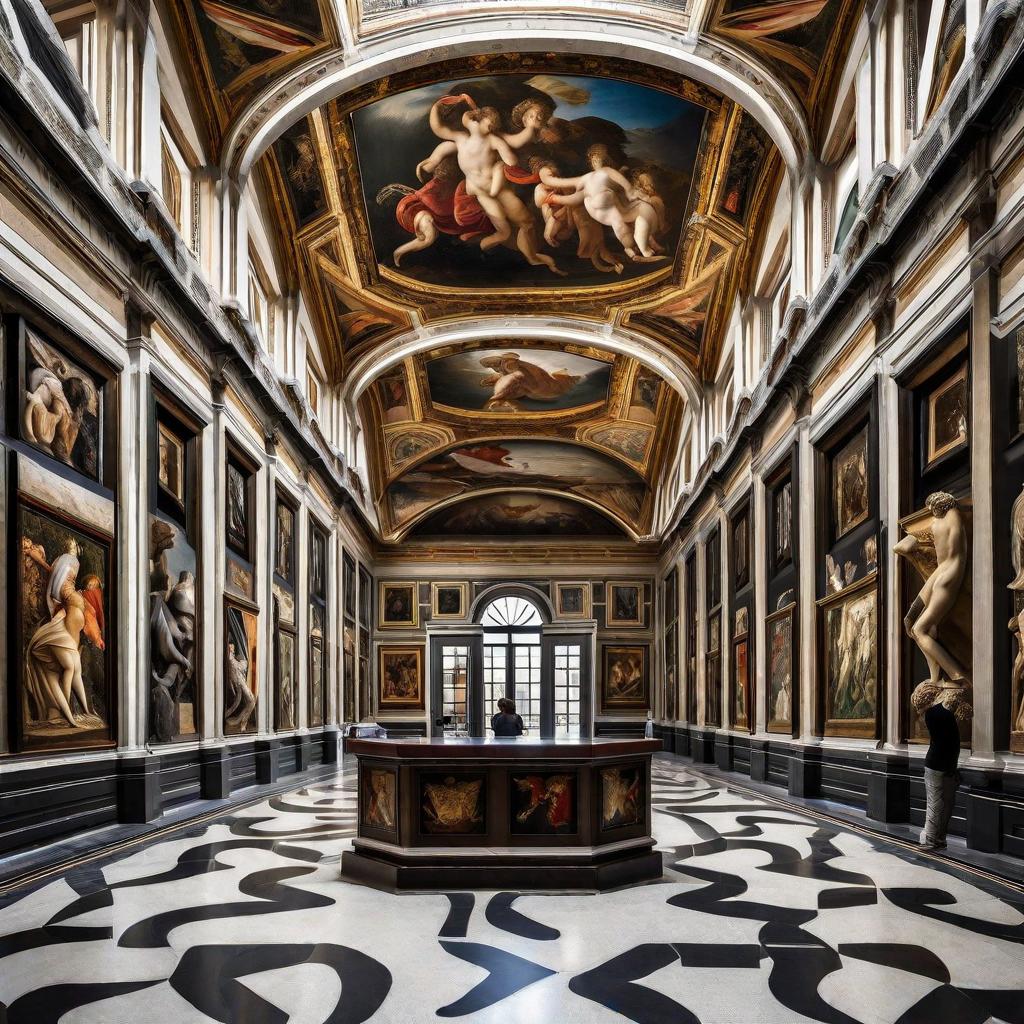
A. Admire the Renaissance art at the Uffizi Gallery:
- The Uffizi Gallery is one of the most renowned art museums in the world, located in Florence, Italy.
- It houses an extensive collection of Renaissance masterpieces, including works by Botticelli, Michelangelo, Leonardo da Vinci, and Raphael.
- Visitors can admire iconic paintings such as Botticelli’s “The Birth of Venus” and Leonardo da Vinci’s “Annunciation.”
- The museum’s layout follows a chronological order, allowing visitors to trace the evolution of Renaissance art.
- Art enthusiasts can also appreciate lesser-known gems and sculptures within the museum’s vast collection.
B. Climb to the top of the Duomo for panoramic views of the city:
- Florence Cathedral, also known as the Duomo, is an architectural masterpiece with its distinctive dome designed by Filippo Brunelleschi.
- Climbing to the top of the Duomo offers visitors breathtaking panoramic views of Florence and its surrounding hills.
- The climb involves ascending over 400 steps to reach the dome’s viewing platform, but the stunning vistas make it well worth the effort.
- Along the way, visitors can admire the intricate frescoes inside the dome and peer out through small windows overlooking the city.
- The experience provides a unique perspective of Florence’s historic center, including landmarks such as the Palazzo Vecchio and the Ponte Vecchio.
C. Visit the Ponte Vecchio bridge for a romantic sunset:
- Ponte Vecchio is a medieval bridge spanning the Arno River, famous for its charming shops and picturesque views.
- It is one of the few bridges in the world to have shops built directly onto its structure, selling jewelry, art, and souvenirs.
- At sunset, the Ponte Vecchio offers a romantic ambiance as the golden light reflects off the river and illuminates the bridge’s ancient architecture.
- Couples can stroll hand in hand across the bridge, enjoying the magical atmosphere and admiring the reflections in the water below.
- Many visitors choose to capture the moment with photographs of the sunset casting a warm glow over the historic buildings lining the riverbanks.
3. Venice :
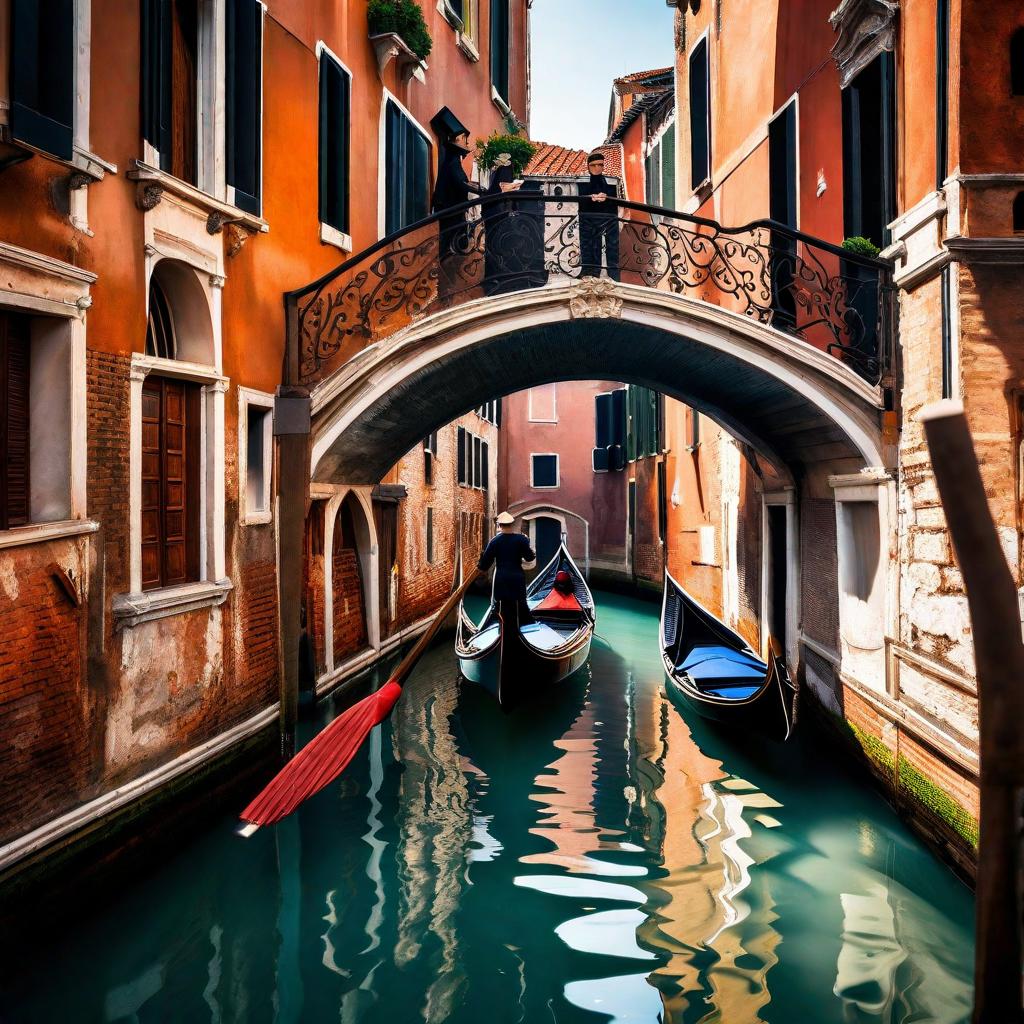
A. Enjoy a gondola ride along the serene canals:
Venice is renowned for its intricate network of canals, and there’s no better way to experience the city’s charm than by taking a gondola ride. Glide along the serene waters as your gondolier expertly navigates through narrow canals, passing by historic palaces, elegant bridges, and hidden corners of the city. Feel the romance in the air as you soak in the picturesque views of centuries-old buildings reflected in the shimmering water. Gondola rides offer a unique perspective of Venice, allowing you to appreciate its beauty and architectural marvels from a tranquil vantage point. Whether you’re exploring the iconic Grand Canal or meandering through quieter waterways, a gondola ride is a quintessential Venetian experience not to be missed.
B. Explore the historic St. Mark’s Basilica:
St. Mark’s Basilica stands as a symbol of Venice’s rich history and cultural heritage. Step inside this magnificent Byzantine cathedral, adorned with intricate mosaics, marble columns, and golden altarpieces. Marvel at the opulent design and architectural splendor of the basilica, which has stood as a testament to Venetian craftsmanship for over a millennium. Admire the dazzling mosaics depicting scenes from the Bible and the life of St. Mark, whose relics are housed within the basilica. Climb to the rooftop terrace for panoramic views of St. Mark’s Square and the surrounding lagoon, offering a breathtaking perspective of Venice’s skyline. Exploring St. Mark’s Basilica provides a captivating journey through Venetian history and religious significance, leaving visitors in awe of its grandeur and spiritual ambiance.
C. Attend the famous Venice Carnival for a memorable experience:
The Venice Carnival is an extravagant celebration of art, culture, and tradition that dates back to the 12th century. Each year, thousands of masked revelers descend upon Venice to partake in this iconic event, characterized by elaborate costumes, masquerade balls, and lively parades. Immerse yourself in the festive atmosphere as the city comes alive with music, dance, and theatrical performances. Wander through St. Mark’s Square, where locals and visitors alike don ornate masks and costumes, adding to the carnival’s mystique and allure.
4. Amalfi Coast :
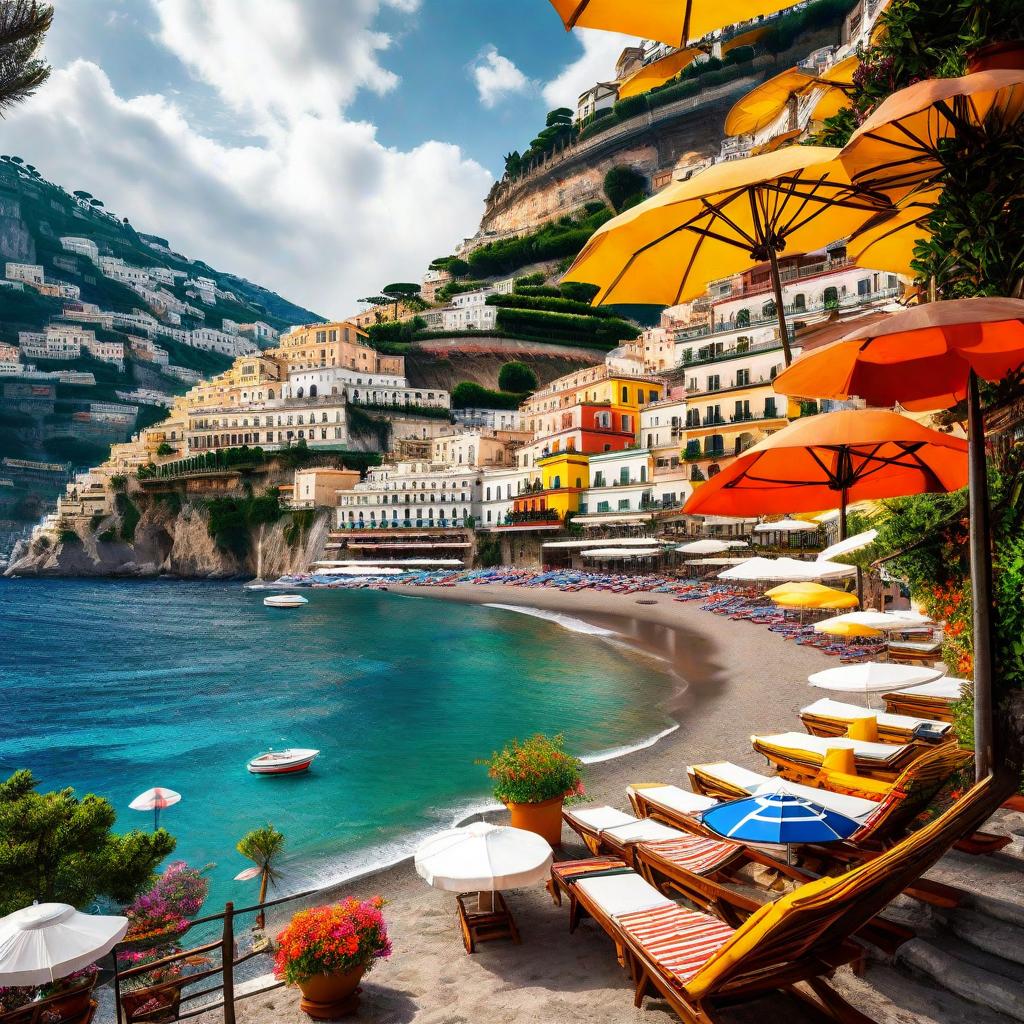
A. Relax on the stunning beaches of Positano: Positano is renowned for its picturesque beaches nestled between dramatic cliffs along the Amalfi Coast. Spend a leisurely day soaking up the Mediterranean sun and taking in the stunning coastal views. Whether you prefer the bustling Spiaggia Grande with its colorful umbrellas and vibrant atmosphere or the quieter Fornillo Beach for a more serene experience, Positano offers options for every beachgoer. Enjoy swimming in the clear azure waters, lounging on the pebbled shores, or exploring the charming seaside cafes and boutiques that line the coastline. Don’t miss the opportunity to capture postcard-perfect photos of Positano’s iconic pastel-colored houses cascading down the cliffs, creating a breathtaking backdrop for your beach day.
B. Hike the scenic Path of the Gods for breathtaking views: The Path of the Gods (Sentiero degli Dei) is a renowned hiking trail that offers some of the most spectacular views along the Amalfi Coast. Embark on this scenic adventure from the town of Bomerano, following ancient mule tracks and winding pathways that traverse the rugged coastal landscape. As you ascend, marvel at panoramic vistas of the azure Mediterranean Sea, verdant mountainside vineyards, and quaint hilltop villages dotting the cliffs below. The trail meanders through fragrant lemon groves and Mediterranean scrub, providing ample opportunities to immerse yourself in the region’s natural beauty. Be sure to bring sturdy hiking shoes, plenty of water, and your camera to capture the awe-inspiring vistas that await you along the Path of the Gods.
C. Visit the picturesque town of Ravello for a taste of local culture: Nestled high above the Amalfi Coast, the enchanting town of Ravello offers a peaceful retreat from the coastal crowds and a glimpse into local culture and history. Explore Ravello’s charming cobblestone streets lined with historic palaces, elegant villas, and colorful gardens bursting with fragrant blooms. Visit iconic landmarks such as Villa Rufolo, whose stunning gardens inspired Richard Wagner, and Villa Cimbrone, known for its panoramic terrace overlooking the sea. Attend a classical music concert at the annual Ravello Festival, held in the town’s historic venues, or sample local delicacies such as sfogliatella pastries and limoncello liqueur at quaint cafes and trattorias. Whether you’re admiring Ravello’s breathtaking views, exploring its cultural heritage, or simply savoring its laid-back atmosphere, a visit to this picturesque town is sure to leave a lasting impression.
5. Tuscany :
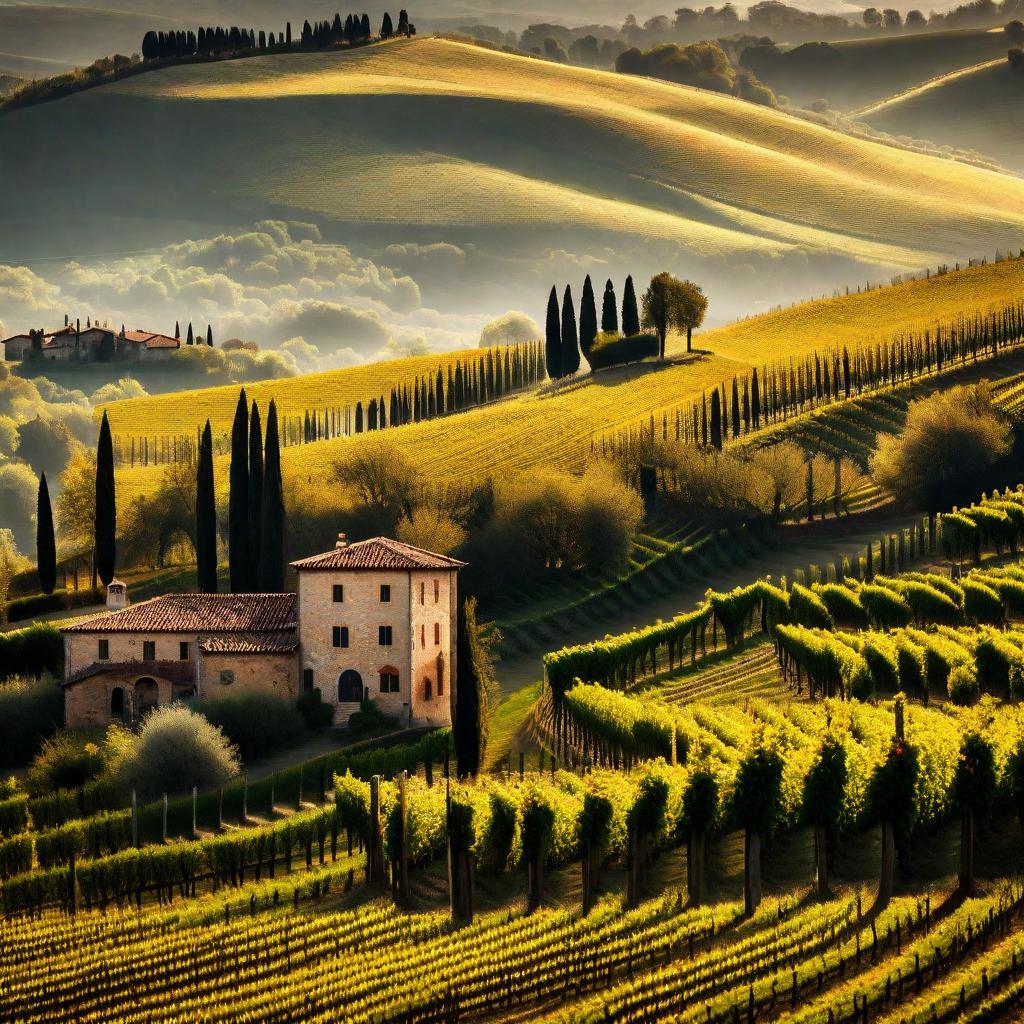
A. Indulge in wine tasting at a local vineyard in Chianti:
Experience the essence of Tuscan wine culture by embarking on a wine tasting journey at a local vineyard in the Chianti region. Nestled amid picturesque vineyards and olive groves, these family-owned wineries offer guided tours and tastings where you can sample a variety of renowned Chianti Classico wines. Learn about the winemaking process, from grape cultivation to aging in oak barrels, and savor the distinctive flavors and aromas of Sangiovese, the region’s signature grape variety. Enjoy panoramic views of the rolling hills while sipping on fine wines, accompanied by delicious local specialties such as pecorino cheese and bruschetta topped with extra virgin olive oil.
B. Explore the medieval town of San Gimignano:
Step back in time as you wander through the enchanting streets of San Gimignano, a beautifully preserved medieval town renowned for its iconic skyline of ancient towers. Marvel at the imposing stone towers that once symbolized the wealth and power of noble families, offering panoramic views of the surrounding countryside from their lofty heights. Stroll through the atmospheric piazzas lined with Renaissance palaces, churches, and artisan workshops, immersing yourself in the town’s rich history and cultural heritage. Don’t miss the opportunity to sample San Gimignano’s famous gelato, made with traditional recipes using locally sourced ingredients, or to explore the Museum of Torture for a glimpse into the darker aspects of medieval life.
C. Relax in the rolling hills of the Val d’Orcia region:
Escape the hustle and bustle of modern life and unwind amidst the serene beauty of the Val d’Orcia region, a UNESCO World Heritage site renowned for its idyllic landscapes and picturesque hilltop villages. Take leisurely drives along winding country roads flanked by cypress trees and golden wheat fields, stopping to admire postcard-perfect vistas of undulating hills dotted with vineyards, olive groves, and medieval farmhouses. Immerse yourself in the tranquility of the countryside as you explore charming villages such as Pienza, Montalcino, and Montepulciano, renowned for their historic architecture, artisanal crafts, and delectable cuisine. Indulge in leisurely picnics amidst rolling meadows or rejuvenate your senses with a relaxing soak in the thermal baths of Bagno Vignoni, surrounded by natural hot springs and panoramic views of the Val d’Orcia’s timeless beauty.
6. Cinque Terre :
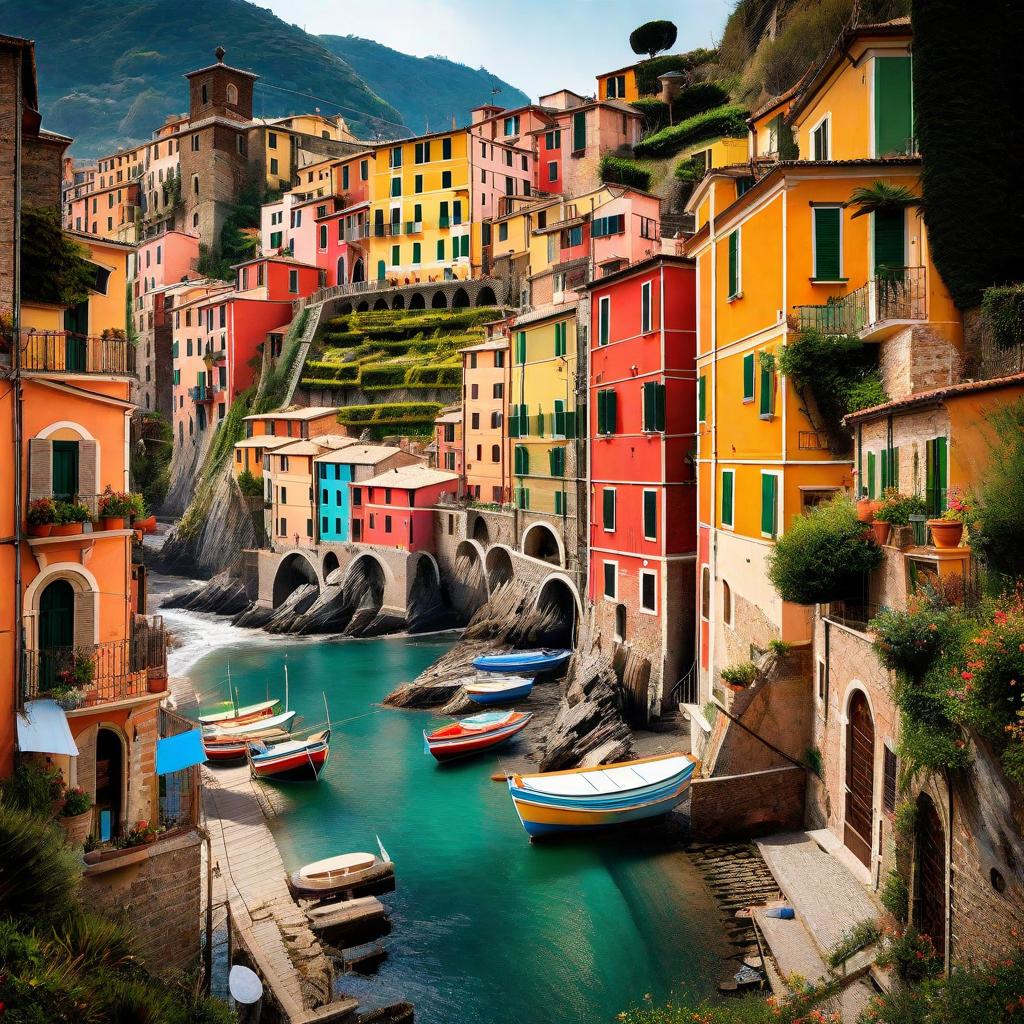
A. Hike the picturesque coastal trails between the five towns:
Scenic Trails: Cinque Terre offers some of the most breathtaking coastal trails in Italy, connecting the five colorful villages of Monterosso al Mare, Vernazza, Corniglia, Manarola, and Riomaggiore. These well-marked paths wind through terraced vineyards, olive groves, and along sheer cliffs, providing panoramic views of the Ligurian Sea.
Varied Difficulty Levels: Whether you’re an experienced hiker or prefer a leisurely stroll, there are trails suitable for all fitness levels. The famous Sentiero Azzurro (Blue Trail) is the most popular route, offering relatively easy paths with moderate inclines. For more challenging hikes, consider exploring the higher trails, such as the Sentiero Rosso (Red Trail), which provides stunning vistas but requires a higher level of fitness and proper hiking gear.
B. Enjoy fresh seafood in the charming village of Vernazza:
Seaside Dining: Vernazza is renowned for its picturesque harbor and vibrant waterfront restaurants serving delicious seafood delicacies. Situated right by the sea, these eateries offer unparalleled views as you dine on freshly caught fish, succulent shrimp, and mouthwatering calamari.
Local Specialties: Indulge in traditional Ligurian cuisine, characterized by its use of fresh, locally sourced ingredients. Don’t miss specialties like trofie al pesto (pasta with basil pesto), stuffed anchovies, and seafood risotto, accompanied by a glass of regional wine such as Cinque Terre DOC or Sciacchetrà.
C. Swim in the crystal-clear waters of Monterosso al Mare:
Idyllic Beaches: Monterosso al Mare boasts some of the most beautiful beaches in Cinque Terre, with soft golden sands and azure waters ideal for swimming and sunbathing. The village is divided into two parts: the historic old town and the newer Fegina district, both offering access to stunning beaches.
Refreshing Dip: After a day of hiking or exploring the charming streets of Monterosso, cool off with a refreshing swim in the crystal-clear waters of the Ligurian Sea. The beaches are equipped with facilities such as sun loungers, umbrellas, and beachside cafes, making it easy to spend a relaxing day by the water.
7. Sicily :
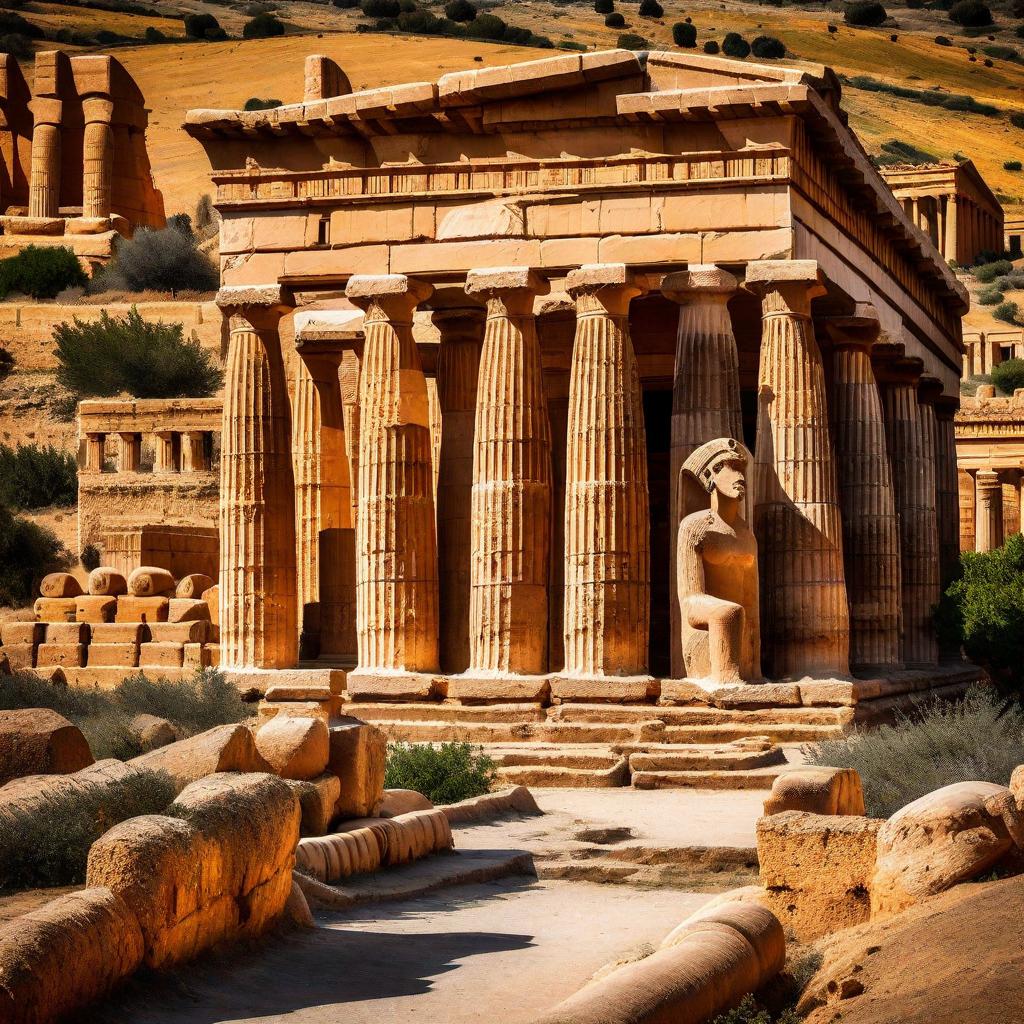
A. Explore the ancient Greek ruins in Agrigento:
Immersing in Ancient History: Agrigento, situated on the southern coast of Sicily, boasts some of the most impressive ancient Greek ruins outside of Greece itself. The Valley of the Temples, a UNESCO World Heritage Site, is home to a stunning collection of well-preserved Doric temples dating back to the 5th century BC. These temples, dedicated to gods such as Zeus and Concordia, offer a glimpse into the grandeur of ancient Greek civilization.
Exploring Architectural Marvels: Within the Valley of the Temples, visitors can explore iconic landmarks such as the Temple of Concordia, considered one of the best-preserved Greek temples in the world, and the Temple of Juno, with its commanding hilltop position overlooking the surrounding countryside.
B. Visit the stunning beaches of Taormina:
Scenic Coastal Escapes: Taormina, located on the east coast of Sicily, is renowned for its breathtaking beaches and crystalline waters. The picturesque coastline offers a variety of options for beachgoers, from secluded coves to bustling resort areas. One of the most popular beaches is Isola Bella, a small island nature reserve connected to the mainland by a narrow strip of sand. Visitors can relax on the pebbly beach, swim in the azure sea, or explore the marine life while snorkeling or diving.
Cultural Delights with a Coastal Backdrop: Beyond its natural beauty, Taormina is also home to cultural attractions such as the ancient Greek theater, which offers panoramic views of Mount Etna and the coastline below. After a day of sun and sand, visitors can wander through the charming streets of Taormina’s historic center, lined with elegant boutiques, artisan shops, and quaint cafés. Don’t miss the chance to indulge in Sicilian delicacies such as arancini (rice balls), cannoli (sweet pastries), and granita (flavored ice dessert), enjoyed with a backdrop of stunning coastal scenery.
C. Indulge in Sicilian cuisine in the vibrant city of Palermo:
A Gastronomic Journey: Palermo, the capital city of Sicily, is a culinary paradise where ancient traditions blend with multicultural influences to create a vibrant food scene. From street food markets to Michelin-starred restaurants, Palermo offers a diverse array of culinary delights to tantalize your taste buds. Sample local specialties such as panelle (chickpea fritters), sfincione (Sicilian pizza), and pasta con le sarde (pasta with sardines), infused with flavors of the Mediterranean.
Exploring Palermo’s Culinary Heritage: Dive into Palermo’s bustling street markets, such as the historic Ballarò Market, where vendors sell fresh produce, seafood, and spices amidst a lively atmosphere of sights, sounds, and aromas. Join a guided food tour to discover hidden gems and learn about the city’s culinary history from knowledgeable locals.
8. Lake Como
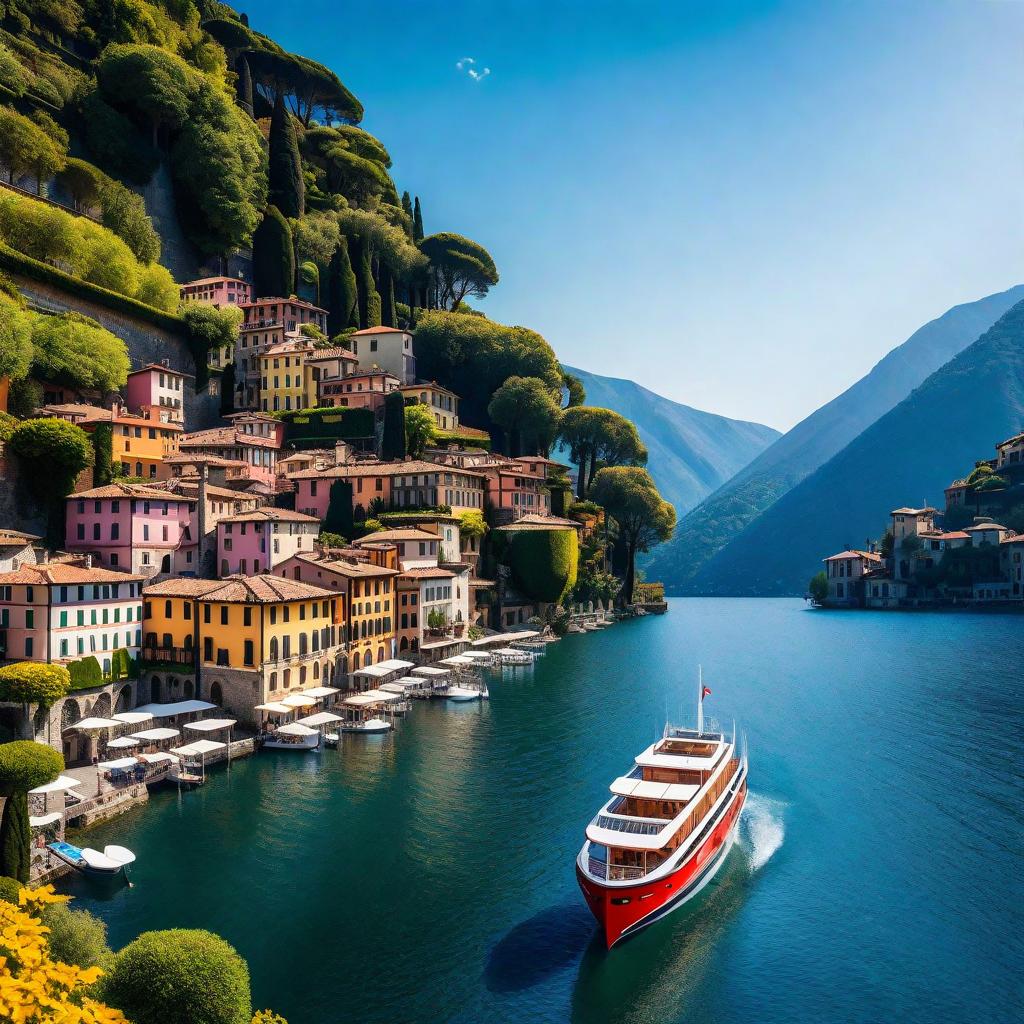
A. Take a ferry ride across the tranquil lake:
- Scenic Beauty: Lake Como is renowned for its breathtaking natural beauty, surrounded by lush hillsides and majestic mountains. Taking a ferry ride allows you to fully appreciate the stunning landscapes and serene waters that have inspired artists, writers, and travelers for centuries.
- Relaxing Experience: The gentle sway of the ferry and the cool breeze off the lake create a tranquil atmosphere ideal for relaxation and reflection. Whether you’re sitting on the open deck soaking in the sunshine or admiring the views from the comfort of the cabin, a ferry ride offers a peaceful escape from the hustle and bustle of everyday life.
B. Visit the grand Villa del Balbianello:
- Historical Significance: Villa del Balbianello is a magnificent 18th-century villa steeped in history and architectural splendor. Originally built as a monastery, it was later transformed into a luxurious residence by its various owners, including the explorer Guido Monzino. Visiting the villa allows you to step back in time and marvel at its elegant interiors, ornate furnishings, and extensive art collections.
- Breathtaking Gardens: The villa is surrounded by impeccably landscaped gardens overlooking Lake Como, offering spectacular panoramic views. Stroll through the meticulously manicured lawns, fragrant flower beds, and shady groves adorned with statues and fountains. The tranquil ambiance and stunning vistas make the gardens a perfect spot for leisurely exploration and romantic walks.
C. Explore the charming town of Bellagio:
- Quaint Architecture: Bellagio is often referred to as the “Pearl of Lake Como” for its picturesque charm and elegant architecture. Wander through its narrow cobblestone streets lined with pastel-colored buildings adorned with blooming flowers and graceful balconies. Admire the historic churches, charming cafes, and boutique shops that give the town its timeless appeal.
- Panoramic Views: Perched on a promontory at the intersection of Lake Como’s three branches, Bellagio offers breathtaking panoramic views of the surrounding landscape. Visit the Punta Spartivento viewpoint for a stunning vista of the lake and the majestic Alps beyond. Whether you’re enjoying a leisurely lakeside stroll or savoring a meal at a waterfront restaurant, Bellagio’s vistas never fail to captivate visitors.
9. Milan
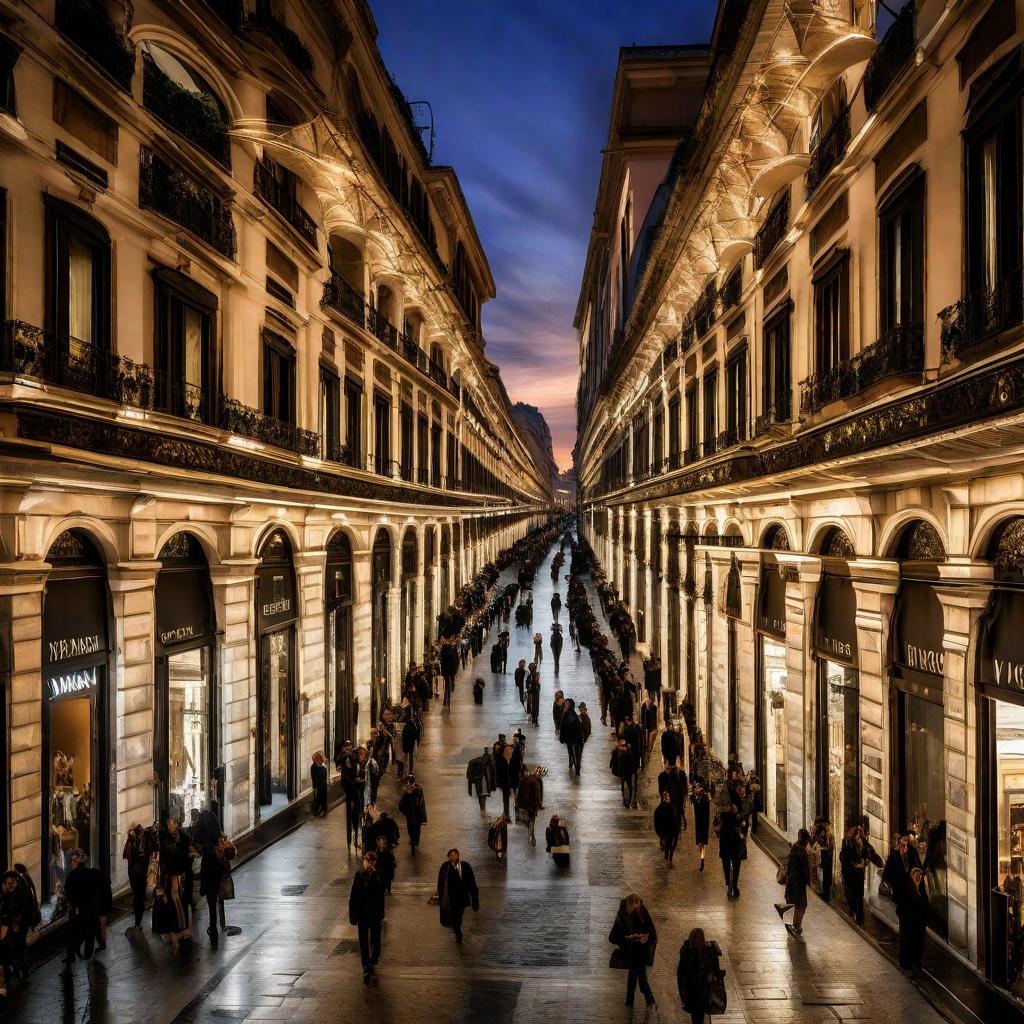
A. Shop at the fashionable Quadrilatero della Moda:
- Milan’s Quadrilatero della Moda, also known as the Fashion Quadrilateral, is a renowned shopping district home to some of the world’s most prestigious fashion houses, including Versace, Prada, and Armani.
- Fashion enthusiasts can stroll along Via Montenapoleone, Via della Spiga, Via Sant’Andrea, and Via Manzoni, where luxury boutiques and designer flagship stores line the streets, showcasing the latest trends and collections.
B. Admire Leonardo da Vinci’s Last Supper at Santa Maria delle Grazie:
- Santa Maria delle Grazie is a UNESCO World Heritage Site and home to one of Leonardo da Vinci’s most famous works, The Last Supper.
- Visitors must book tickets in advance to view the masterpiece, which is housed in the refectory of the church. The painting depicts the biblical scene of the Last Supper of Jesus with his disciples and is renowned for its innovative composition and emotional depth.
C. Visit the impressive Duomo di Milano cathedral:
- The Duomo di Milano is an architectural marvel and one of the largest Gothic cathedrals in the world, renowned for its elaborate façade adorned with spires, statues, and intricate decorations.
- Visitors can climb to the rooftop terraces for panoramic views of Milan and marvel at the cathedral’s elaborate stained glass windows, ornate altars, and impressive marble sculptures inside.
10. Naples :
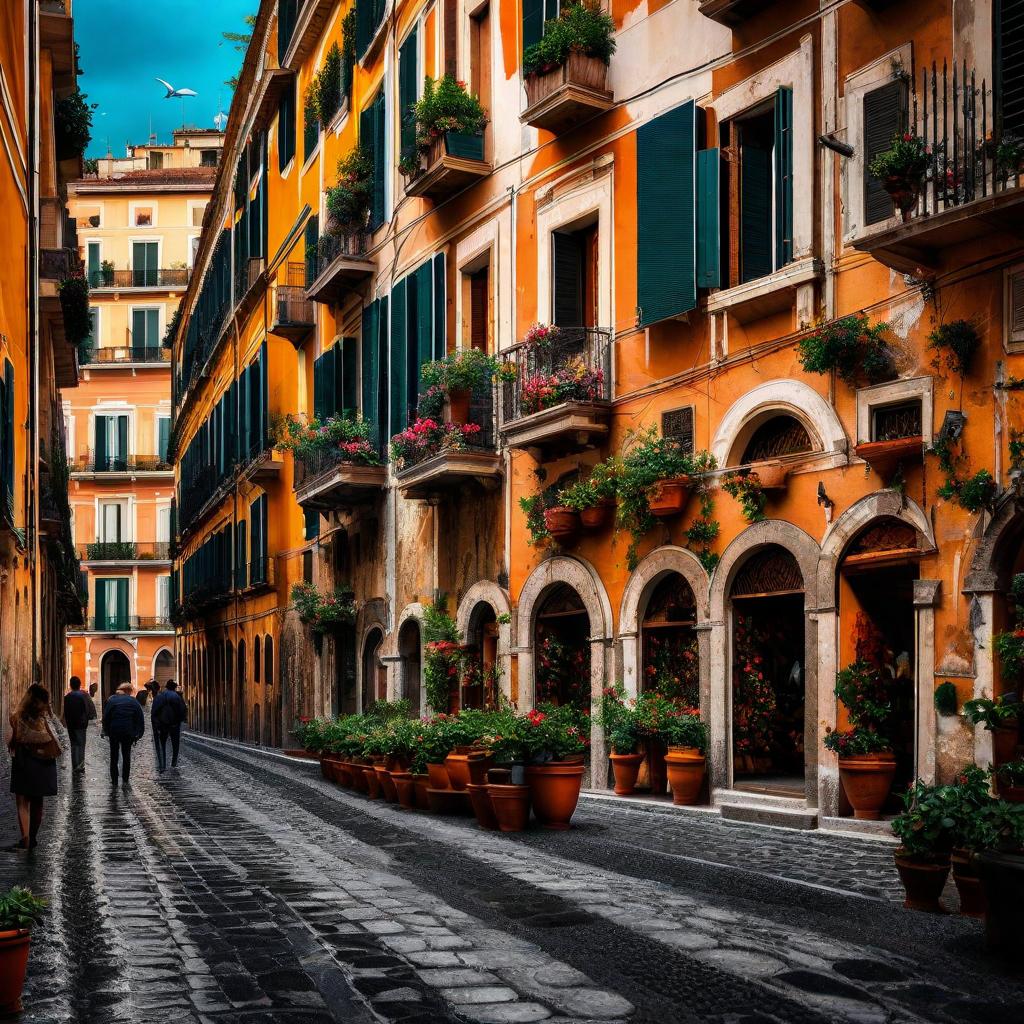
Naples, the capital of the Campania region in southern Italy, is a city steeped in history, art, and culinary delights. Situated by the picturesque Bay of Naples and overlooked by the imposing Mount Vesuvius, this vibrant metropolis offers visitors a rich tapestry of experiences.
Key Points:
Historical Heritage: Naples boasts a wealth of historical landmarks, including the Naples National Archaeological Museum, which houses an extensive collection of artifacts from Pompeii and Herculaneum, offering insights into the ancient Roman civilization. The city’s historic center, a UNESCO World Heritage Site, is home to narrow cobblestone streets, Baroque churches, and palaces that speak to its storied past.
Cultural Hub: As one of Italy’s cultural hubs, Naples has a thriving arts scene. Visitors can admire masterpieces by Caravaggio, Titian, and other renowned artists at the Capodimonte Museum or enjoy a performance at the historic San Carlo Opera House, one of the oldest continuously active opera houses in the world. Street art and vibrant Neapolitan music also add to the city’s cultural vibrancy.
Gastronomic Delights: Naples is renowned as the birthplace of pizza, and no visit is complete without sampling authentic Neapolitan pizza from one of the city’s pizzerias. The local cuisine is characterized by fresh seafood, sun-ripened tomatoes, and fragrant herbs, with dishes like spaghetti alle vongole (spaghetti with clams) and sfogliatella (a shell-shaped pastry) delighting the taste buds.
Gateway to Pompeii and the Amalfi Coast: Naples serves as a gateway to two of Italy’s most iconic destinations. Visitors can take day trips to the ancient city of Pompeii, which was buried by the eruption of Mount Vesuvius in 79 AD, or explore the stunning Amalfi Coast, with its cliffside villages, azure waters, and picturesque landscapes.
Also Read : Discovering Spain: 10 Must-Visit Travel Destinations
Conclusion :
In conclusion, Italy is a country that never fails to captivate the imagination with its timeless beauty, rich history, and vibrant culture. Whether you’re exploring ancient ruins, savoring delicious cuisine, or simply soaking in the stunning landscapes, each destination in Italy promises an unforgettable experience that will leave you longing to return again and again.
FAQs :
1. What is the best time to visit Italy?
The best time to visit Italy depends on your preferences and the regions you plan to explore. Generally, the most popular time to visit is during the spring (April to June) and fall (September to October) when the weather is mild, crowds are smaller, and prices are more reasonable.
2. How can I travel between different cities in Italy?
You can travel between different cities in Italy by train, bus, car, or domestic flights.
3. Are there any hidden gems in Italy that are worth visiting?
Matera: Known for its ancient cave dwellings (sassi), Matera offers a unique glimpse into Italy’s past. It’s a UNESCO World Heritage Site and has gained popularity for its historic charm.
- Bologna: Often overshadowed by more famous Italian cities, Bologna is a vibrant university town with stunning architecture, lively markets, and incredible cuisine. It’s the birthplace of Bolognese sauce.
Summary: Italy offers a diverse array of must-visit destinations, from historic cities like Rome and Florence to picturesque coastal towns like Cinque Terre and Amalfi Coast. Each region of Italy has its own unique charm and attractions, making it a country worth exploring.

